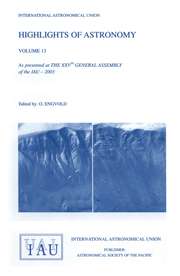No CrossRef data available.
Article contents
An Update on The Problem of Small Comets
Published online by Cambridge University Press: 14 August 2015
Extract
The evidence for a major population of small comets (SCs) is summarized in two steps. First, we briefly summarize our previous work. Second, we describe recent work that continues to find SCs. When new capabilities become available that can detect SCs, we expect to find them and this is occurring. At present, their detection is a haphazard process and we advocate a dedicated, optimized search program.
We define SCs as those icy bodies (i.e., sublimating bodies) with radius less than 1000 meters. Often the existence of SCs is inferred from effects ascribed to them. These “effects” include: lunar cratering; cratering on Ganymede; excess interplanetary hydrogen; delivery of volatile materials to the terrestrial planets; and a source of fragile bodies entering the Earth’s atmosphere. While some of these indirect methods support the existence of SCs, direct observations are clearly preferred.
Information
- Type
- II. Joint Discussions
- Information
- Copyright
- Copyright © Kluwer 1998

